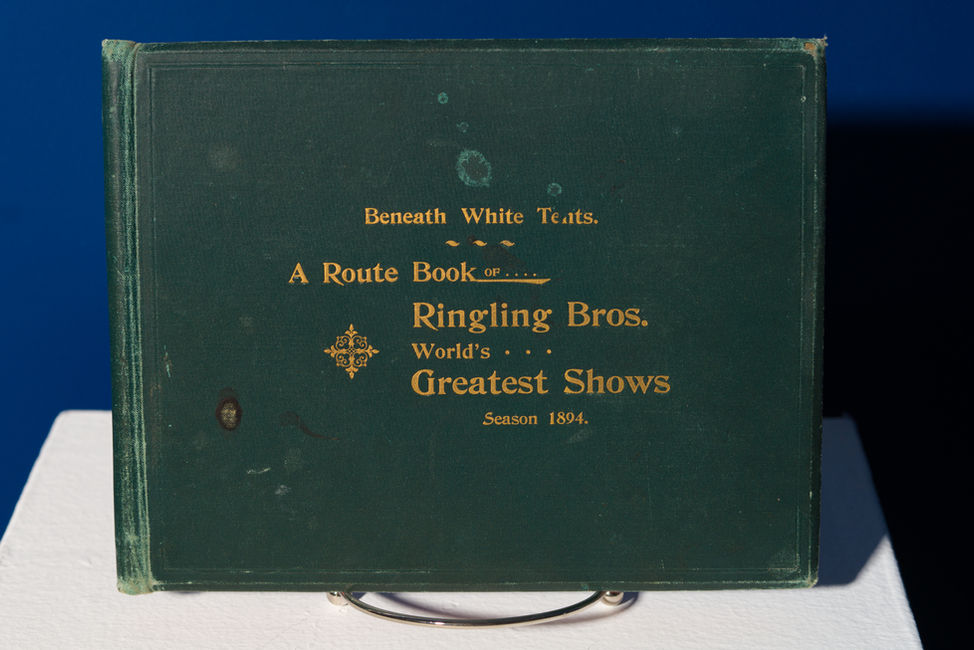
Beneath White Tents: The Legacy of the Circus
This exhibition, consisting primarily of objects held by Truman State University’s Special Collections and Museums, tells the story of the traveling circus in its heyday, and how its legacy has impacted our collective memory. Entertaining, informative, spectacular, and deceptive—circus performances reflected the mainstream values of their audiences while bringing them into contact with sights and sounds that only gradually became accessible via mass media in rural communities across the country. The legacy of the circus lives on in Hollywood films, contemporary versions of circus performance, and in the memories of those who saw the traveling circus before it left town.
The Circus is Coming to Town: Encounters with the Extraordinary
The American circus emerged in the late eighteenth century, building on the traditions of horse trick riding and animal showcases. With the invention of the railroad and the moveable canvas tent in the mid-nineteenth century, circuses expanded across the country. Some, like Barnum and Bailey and the Ringling Brothers, quickly became household names.
The circus was a spectacular event. Colorful posters would plaster a town weeks in advance. When the circus trains finally rolled in, it was like the appearance of another world. The circus offered audiences a glimpse into the new, exciting,
and exotic.
At the same time, circuses were morally complicated. They were rife with racism and exoticism. Yet, they were subversive, offering people on the margins of society a community and a way to make a living. Circuses were filled with as much glitz and glamour as they were with contradictions.
Click the images to learn more!
The Circus is Leaving Town: Gone But Not Forgotten
When it came time for the traveling circus to leave town, it left behind memories and a massive cultural imprint. People who had seen the circus or heard of its splendor wanted to remember what they had seen, so they bought souvenirs and told stories to keep the memory alive. Additionally, individuals, such as P. T. Barnum, that brought the circus to the forefront of American minds were commemorated in ways that glorified their accomplishments. Those accomplishments had begun to fade by the 1950s due to increased awareness of the circus’s abuse of animals and performers, as well as the emergence of other ready forms of entertainment such as theme parks. Regardless, memories of the traveling circus live on.
Click the images to learn more!














